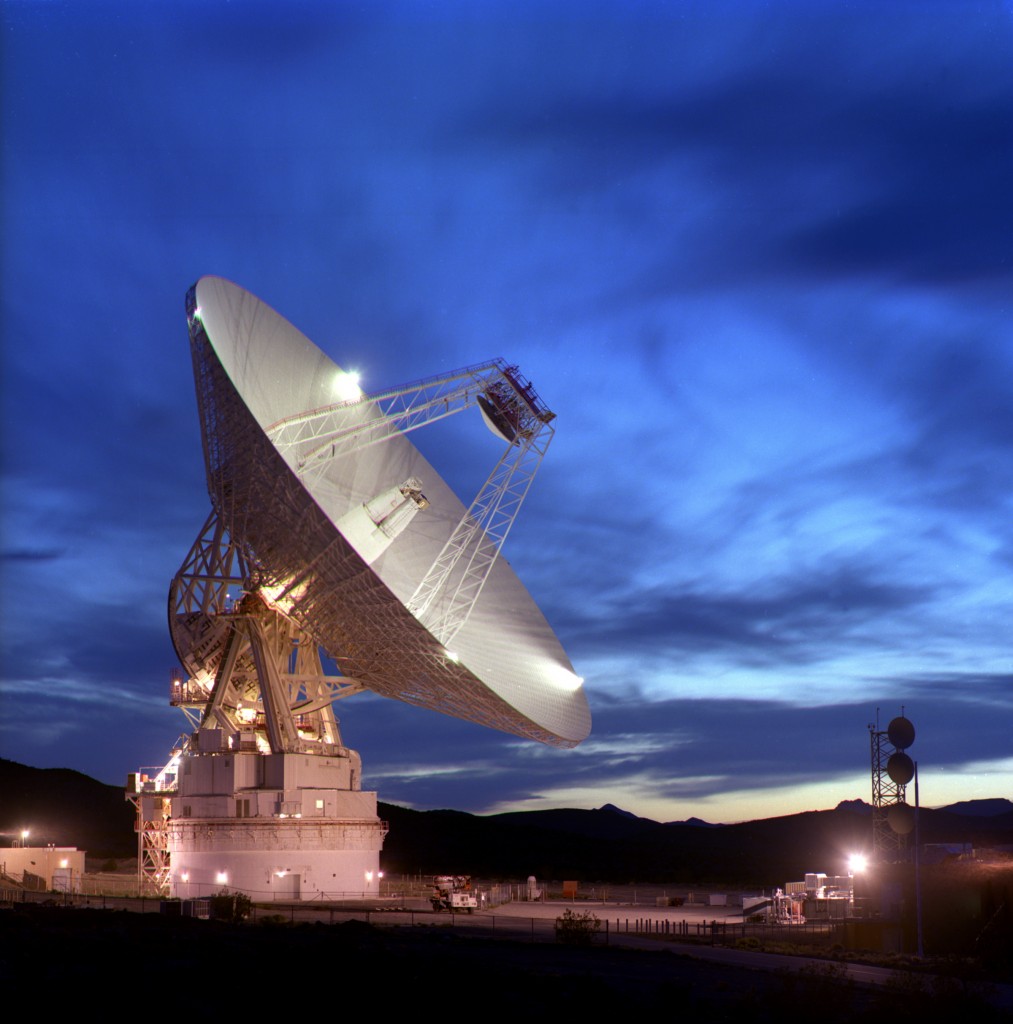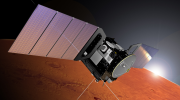Find below an outline timeline for the flyby of Phobos around 29 December 2013.
Initial tracking will be provided by DSA 1, ESA’s 35m deep-space ground station at New Norcia, Australia. Then NASA will provide support with two of their 70m stations, DSS-63 near Madrid, Spain, and then DSS-14 in Goldstone, California. Finally, Mars Express will be tracked again by New Norcia.
ESA’s 35m New Norcia station in action
Phobos flyby timeline
| 13-362T | 17:40:00Z | New Norcia (NNO) station starts tracking Mars Express |
| 13-363T | 01:30:00Z | DSS-63 acquires the signal from MEX |
| 13-363T | 03:21:52Z | DSS-63 takes over as primary station |
| 13-363T | 03:44:05Z | NNO stops tracking MEX |
| 13-363T | 07:09:00Z | Mars Express – closest approach to Phobos (45km from surface) |
| 13-363T | 07:20:35Z | Signals from closest approach reach Earth (due to the one-way light time) |
| 13-363T | 08:55:00Z | DSS-14 begins tracking MEX |
| 13-363T | 11:02:50Z | DSS-14 takes over as primary station |
| 13-363T | 11:25:00Z | DSS-63 stops tracking MEX |
| 13-363T | 17:06:02Z | NNO begins tracking MEX |
| 13-363T | 18:37:53Z | NNO takes over as primary station |
| 13-363T | 19:00:00Z | DSS-14 stops tracking MEX |
| 13-364T | 01:12:30Z | The transmitters on MEX start switching off; flyby ‘mission’ ends |
This timeline was taken directly from the operations plan used by the MEX flight team at ESOC; the ’13-262′ and ’13-263′ annotation simply refers to the year and day of the year. So, 362 is 28 December, 363 is 29 December and so on. ‘Z’ time (Zulu-time) refers to GMT time; CET time is +1 hour. All times subject to change.
Tracking stations
The station coverage must be uninterrupted (except during occultation by Mars) for the entire 35-hour period of the flyby mission. Therefore, an overlap in coverage between stations has been intentionally planned so as to be able to detect and eliminate any inaccuracies due to the stations themselves.
“This overlap imposes a very specific handover procedure between the ESA Estrack and NASA DSN networks; this handover has been rehearsed numerous times with the actual ground stations,” says Michel Denis, the MEX Operations Manager at ESOC.
The sequence of station hand-over – from ESA to NASA to ESA – makes this a truly international, intercontinental, inter-agency endeavour!
Michel also points out that the use of NASA’s 70m stations is critical to the accuracy of the measurements. “We’d like to thank our US colleagues for the provision of some very specific station passes; this is due to the very cooperative efforts of the DSN station scheduling team.”
Should any of the station listed above become unavailable at the last minute, a backup has been booked in advance using ESA’s 35m Estrack stations, which could take over to ‘save’ the Phobos flyby; this would incur a penalty in reduced measurement accuracy.





Discussion: 2 comments
No VLBI tracking!? Why is the European VLBI Network (EVN) not involved in this experiment?
Hi Dave: Reply from Mars Express project scientist Olivier Witasse:
There is VLBI tracking; results Will be communicated in coordination with the Mars Express radio science team.
— Olivier